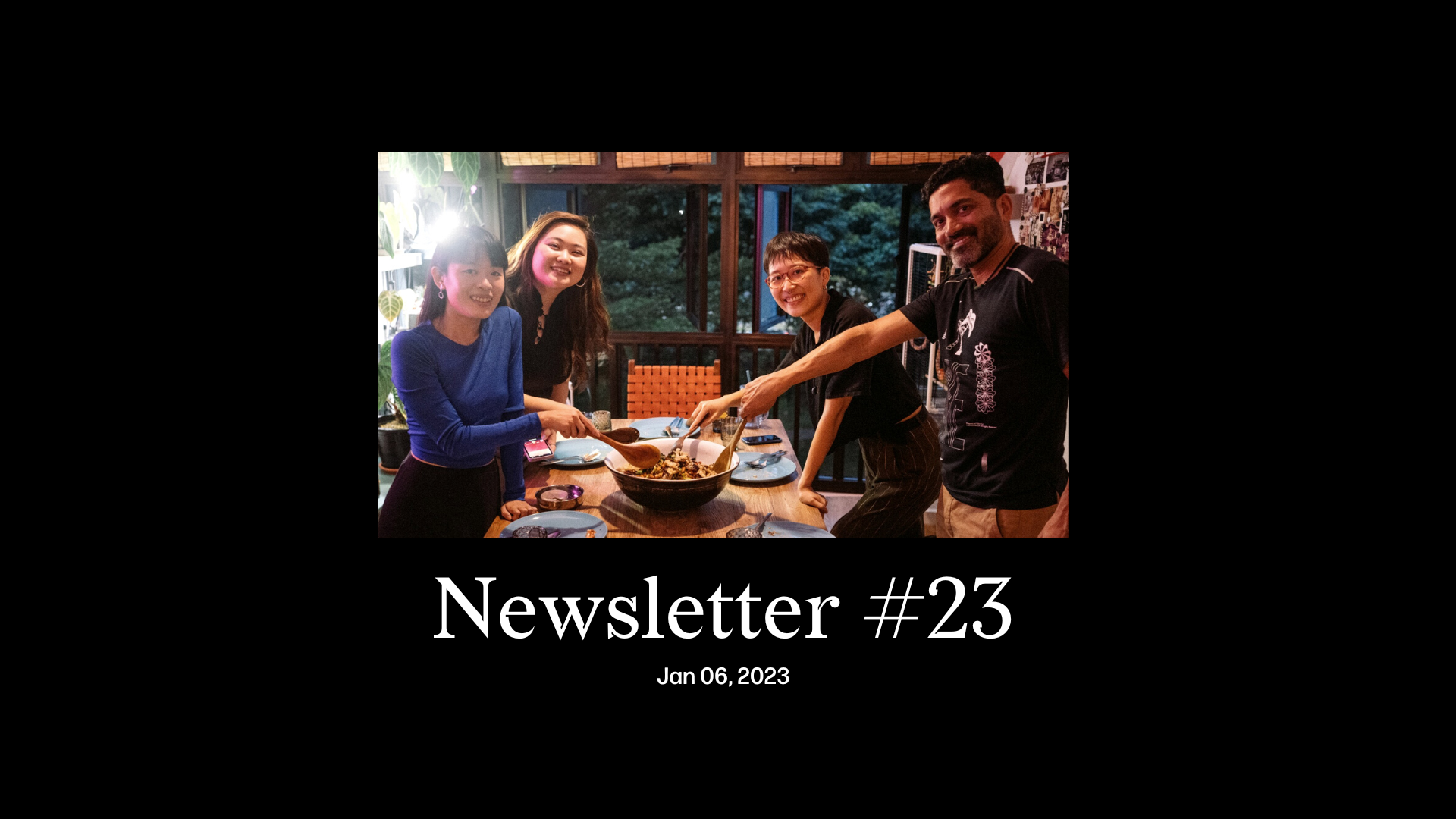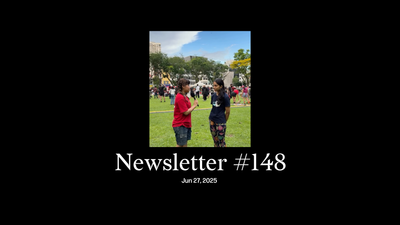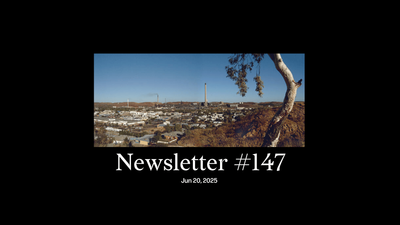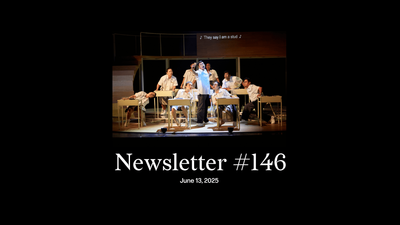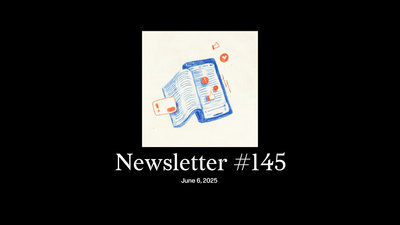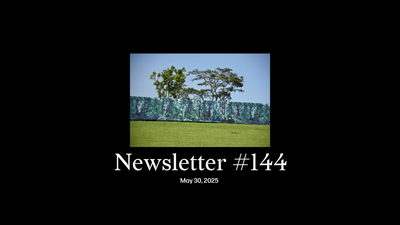Dear reader,
Happy New Year! Your favourite Singaporean weekly is back. And since you’ve missed us, we’re sending you an extra e-mail today. (I’m sorry!! We had a little glitch forty-five minutes ago. Read this one.)
Anyhow, we hope you had a cheerful, restorative break with your loved ones.
And possibly a bit too much food. This early January period, coming as it does between Christmas and Chinese New Year (CNY), is of vital importance to waistlines and gym businesses in Singapore. You may see colleagues turning down lunches and faithfully showing up for Spin and HIIT classes. Already many are cursing the compressed season of austerity—CNY is early this year.
The killjoys at Singapore’s Health Promotion Board will also soon emerge to remind you of how many extra steps you must take for every pineapple tart you eat. In other words, this is the time in Singapore, that gastronomic interregnum, for all of us to take stock of what we put into our bodies.
Accompanying us during that meditation is Amandas Ong, who has just published a “Postcard from London: what an urban farm taught me about loving animals.” You may remember Amandas’s first piece for us in September, a Singaporean reporting from Ukraine. And some of you got to meet her on a behind-the-scenes Zoom call in November (a perk for Supporters and Patrons).
Amandas’s piece today reminds me of how far Singaporeans have come in terms of empathy for non-human beings. An anecdote from the 2000s, especially popular among Malaysians, went something like this: “A Singaporean teacher asked a student to draw a chicken. They drew an image of breast meat in a Styrofoam pack.”
Forty years of rapid economic development had indeed caused residents of this trading city to experience further dislocation from our land and wildlife. Yet over the past two decades much has changed, prompted partly by “The Climate Generation”: Millennials and Gen Zs concerned about all the global socio-ecological phenomena, including deforestation, ocean acidification and plastic pollution, associated with the Anthropocene, the epoch of humans. All Singaporeans are now well aware of what a chicken looks like. (Why are there suddenly so many around!?)
With animals more generally, in Singapore there has also been a shift from a more human-centric focus—biodiversity purely for our survival, lab-grown “cultivated” meat as a way to reduce emissions—to one that centres and celebrates the lives of individual animals, their communities, and their interdependence with other species, including humans.
One sees this in our literature, including Eating Chilli Crab in the Anthropocene, an anthology in which we learn about how our Malayan ancestors did not fear but revered the tiger as an “incarnation of the ancestral spirits which protected villages and monitored behaviours”; and about the harmonious, sustainable relationship between seaside kampungers, mangrove forests and the ketam bangkang (mud crabs) celebrated in folk songs. “There are no more ketam bangkang,” one kampunger mourned. “Only earth movers with steel claws.”
Today through Amandas we meet Mabel the Anglo-Nubian goat, two donkeys she calls the Gilmore Girls, and Jammy and Dodger, two bulls. “If you have ever held a cow’s gaze, you’ll know that they arguably have the most beautiful eyes in the animal kingdom—limpid, wide, and framed by the longest lashes.”
Yet however much we might love animals, dietary change is difficult. “I’m in the process of switching to flexible vegetarianism, away from my previously omnivorous diet,” writes Amandas. “I don’t miss beef at all, but being Singaporean Chinese, it’s harder to wean myself off pork.”
(Aside: there are many omnivores in Jom’s team. When we met Amandas in person for the first time last month, we arranged dinner at a Korean BBQ joint. Oops.)
And perhaps this last line speaks to the real power of her piece. While social media has allowed The Climate Generation to understand global issues and find community across borders, behavioural change, especially with diets, is a highly localised experience.
Almost every omnivore I know believes that we consume too much meat but the alternatives and the pathways to change aren’t immediately clear.
“Encouraging conversation about how we eat and what we eat, while acknowledging that there is no straightforward answer, is far better than not thinking about it at all.”
Amandas helps us better manage that intellectual and spiritual discomfort, even as we strive, relentlessly, to improve ourselves.
To your next meal, whatever it might be,
Sudhir Vadaketh
Editor-in-chief, Jom
p.s. There are now over 2,600 subscribers to this free weekly newsletter and almost 600 of you with paid subscriptions to Jom (which gives you access to essays like Amandas’s postcard). It’s a great start but we’re still some way off from breaking even. If you enjoy our work, and want to see Jom survive and thrive, please forward this to some friends and get them to subscribe. Spend your next S$10 on Jom. Not bak kwa.
If you've enjoyed our newsletter, please scroll to the bottom of this page to sign up to receive them direct in your inbox.


